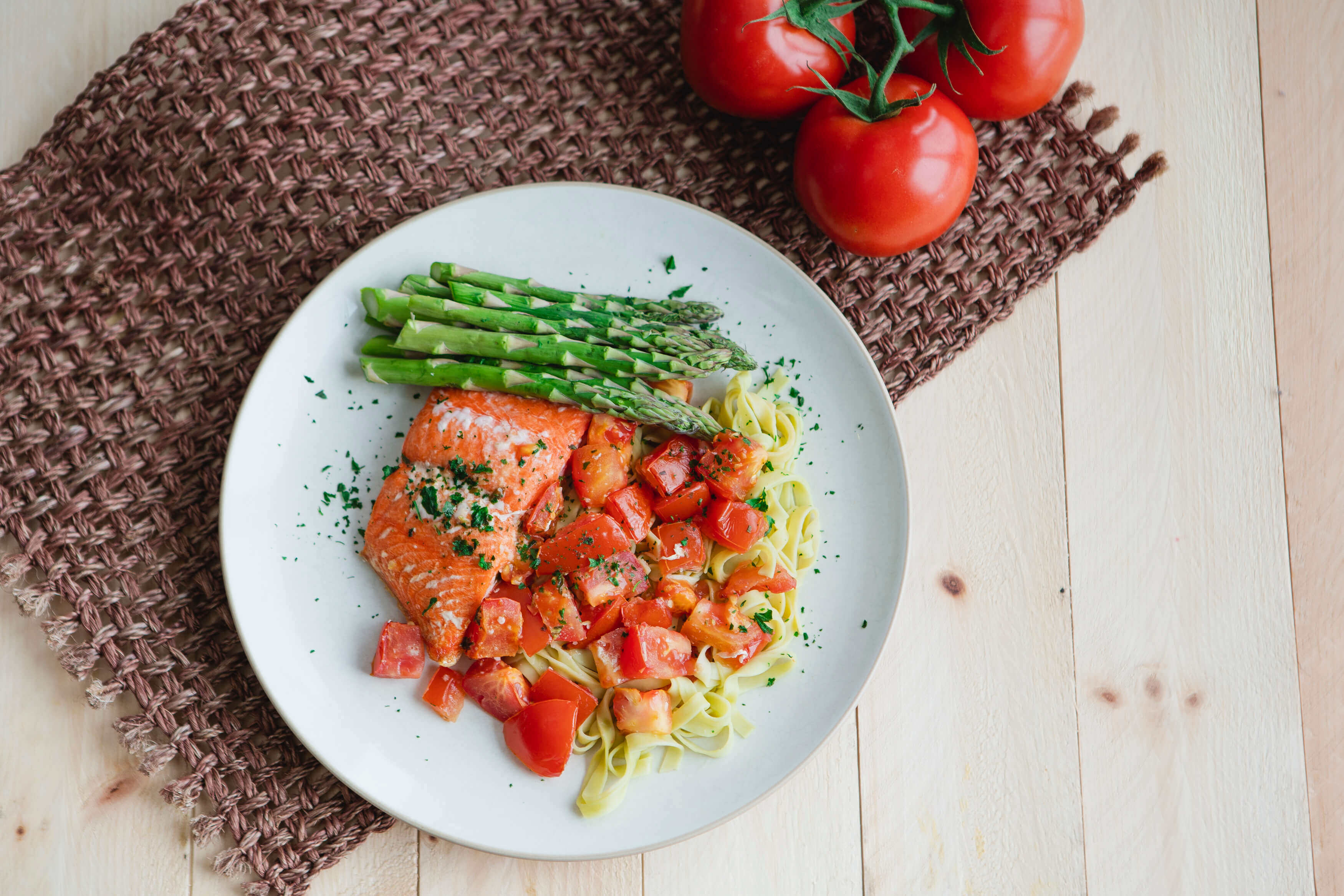The new year is a perfect time for a fresh start, when you can make health a priority for both you and your family. It offers an opportunity to reflect on your family’s eating habits and determine ways to make them better.
For many families, eating healthier is a major priority—but limited time, tight budgets, and picky eaters can make it difficult. That’s why we’re sharing these 11 tips to help make eating right easier for you and your family!
Keep reading to discover a variety of ways you can make 2019 the year you make health a priority and improve your family’s eating habits.
11 Tips To Help Your Family Eat Healthier
Tip 1: Add Greens To Your Staple Meals
Leafy greens are some of the healthiest superfoods on the planet! There are so many ways to add them to classic meals: Here are a few to get you inspired:
- Add wilted spinach to your pasta
- Add spinach and lettuce to your wraps
- Add kale to a smoothie or protein shake
Tip 2: Keep an Eye On Portion Size
Eating healthier doesn’t just mean eating the right foods. It also means eating the right amount of food. Make sure that your family is practicing mindful eating and try to avoid overindulging at meal time. Sitting together at the dinner table rather than in front of the TV will ensure your family members don’t get distracted and forget how much they’ve eaten. Serving food on smaller plates will also reduce portion sizes.

Tip 3: Rethink Snacks
Take a moment and think about what your household counts as a “snack”. Is “snack” synonymous with candy, chips, gummies, or other high-sugar processed foods?
It’s completely normal to treat your family to something sweet every so often, but if your family is snacking on junk food on a daily basis, it’s time to reconsider which foods you’re turning to as an energy booster. Snacks should count as healthy pick-me-ups, not a sugar rush! Opt for helpings of seeds, nuts, fruit, or something else that is unprocessed and natural instead.
Tip 4: Make Meal Prep Family Time
Rather than eating out, stay in for meals and make preparing dinner a family bonding experience. Preparing a meal together is not only fun and educational but it allows you the time to plan out a meal that will be healthy. It’s also a great way to help encourage healthier eating habits for your kids.

Tip 5: Have Healthy Fats, Carbs, and Sugars On Hand
If your kids are begging you for candy or chips, it means they’re craving bad fats, empty carbs, and white sugars. Having healthy alternatives on hand that satisfy cravings is one of the best ways to get your kids into the habit of eating healthy!
When your kids are asking for candy, offer a serving of fruit. If they’re rummaging through the cupboards for chips, offer slices of roasted sweet potato. Fatty foods like cake and biscuits can be swapped for avocado toast or a spoon of peanut butter.
Tip 6: Make Meals Fun To Eat
A common concern from parents and children alike is feeling like eating healthy is boring and bland. The key is variety: try different foods, eat seasonally, get a new cookbook, or try different herbs and spices! You can also shape your kids’ food into unique shapes or add it to a skewer to make mealtime more fun to eat. Liven up vegetables by spiralizing them to give them a fun texture! These are simple tricks—but they work!

Tip 7: Leave The Salt Shaker Off The Dinner Table
It’s okay to consume salt in moderation—however, seasoning all your food at every meal will dramatically raise your family’s blood pressure. Instead of having the salt and pepper shakers set on the dinner table, tuck them away in the cupboard and only bring them out when needed.
Tip 8: Rethink Your Drinks
It’s a well-known fact that soda isn’t good for you—it’s packed with all kinds of bad sugars and preservatives. However, did you know that many fruit juices are just as unhealthy? Many fruit juices, fruit cocktails, smoothies, and lemonades found at the supermarket have the same amount of sugar and preservatives as soda. Even apple juice!
Check the nutritional facts (especially the sugar content) and ingredients list of the beverages you’re adding to your cart. Or, swap the juice for water—it will keep your family hydrated without the sugar. You can use natural ingredients like fresh fruit to add a bit of extra flavor. Better yet, make a fruit-rich smoothie packed with nutrients and minerals!

Tip 9: Grow A Mini Garden
Having your kids plant a small garden or take care of potted plants will help them appreciate whole, organic food. It will grow their interest in fresh produce and encourage them to use it in their cooking as they grow older. Be sure to use these fresh veggies from your garden when preparing your meals!
Tip 10: Swap The Fats You Cook With
Making a few adjustments to your cooking routine can make a big difference! Swap out margarine or butter with a healthier alternative like olive or coconut oil. Apart from making food taste better, these healthy fats can help control cholesterol and even lower your risk of heart disease.

Tip 11: Have Nutritious Snacks Readily Available
Your family is more likely to eat healthy food if it’s ready to eat. Keep a bowl of fruit out on the kitchen table or keep a tray of veggies and dip in the fridge for easy access. Fresh fruits and vegetables are often cheaper than purchasing a lot of pre-packaged foods, so this option is not only health-conscious but budget conscious too!
Eating Healthier Starts With Small Adjustments
Eating healthier doesn’t have to involve a major lifestyle change. Making small adjustments in your routine can make a big impact and promote healthy living for your kids for years to come. Adjustments like swapping butter with coconut oil or putting the salt in the cupboard take only minutes but will make an impact on your family’s health long-term.
Want more inspiration for living a healthy lifestyle? Check out 12 Tips For Healthy Meal Planning (On A Budget) and The Ultimate Guide To Snacking Healthy On-The-Go.



